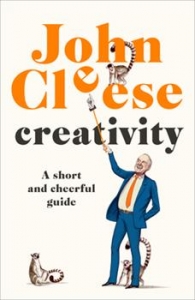Blog to Generate Feelings of Familiarity and Liking
An experimental psychologist in the US asked a group of people to view various Chinese characters that were displayed on a screen. The volunteers were asked to return a few days later to look at a further batch. Some of the characters they viewed this time around were those they’d been shown the week before; others were new to them. Asked which ones they recognized from the week before, the subjects had absolutely no idea.
In a second experiment using a different group of volunteers, participants were not asked which characters they recognized from the week before. Instead, they were asked which images they liked best. The “mind-boggling fact’, relates John Cleese in his book Creativity, is that the ones the participants said they liked best were those show to them the week before! In the unconscious mind, familiarity generated a feeling of liking. 
Cleese wasn’t talking about blog marketing, but there’s a very important connection here. Precisely because blogs are not one-time articles, but conveyers of messages over long periods of time, they serve as unique tools for building a sense of familiarity (and ultimately trust) in readers. As Hubspot’s Corey Wainwright puts it, “If you consistently create valuable content or articles for your target audience, it’ll establish you as an industry leader or authority in their eyes”
A second point Cleese stressed is that “the language of the unconscious is not verbal. Instead, it shows you images. There’s no question that visuals are one of the three “legs” of the business blog “stool”, along with information and perspective or “slant”. Social marketing maven Jeff Bullas lists at least two rather startling statistics to demonstrate the reason images and photos need to be part of any business’ marketing tactics:
- Articles with images get 94% more total views.
- 60% of consumers are more likely to consider or contact a business when an image shows up in local search results.
Just as marketing professor Demetra Adam explained, increasing the number of “cues” increases prospects’ perception of their own knowledge, making it easier for them to buy (see our post of Feb. 22). Combining verbal and visual “cues” in a blog post increases that feeling of familiarity and “liking”.
Blog to generate familiarity!






Follow us online!